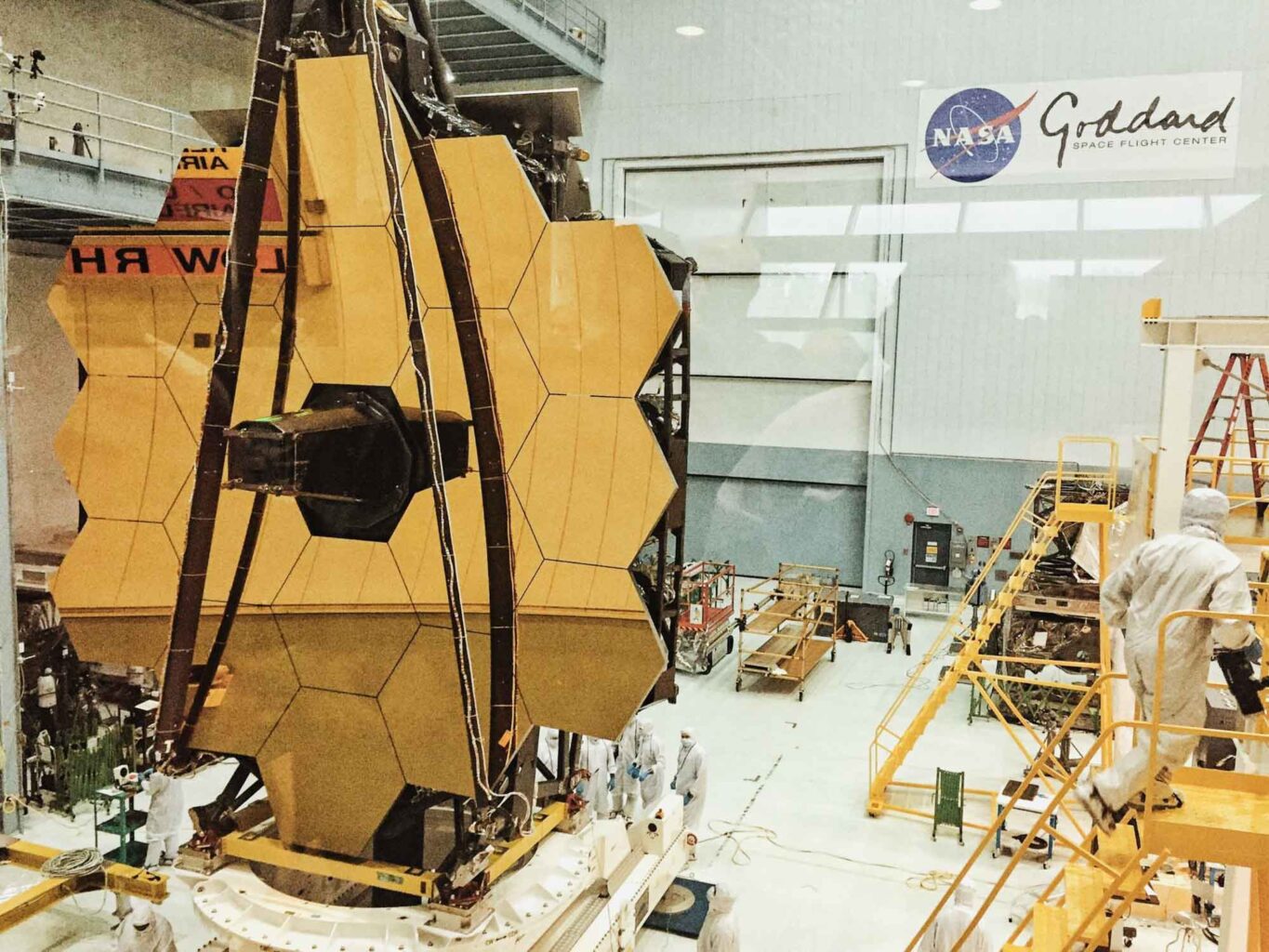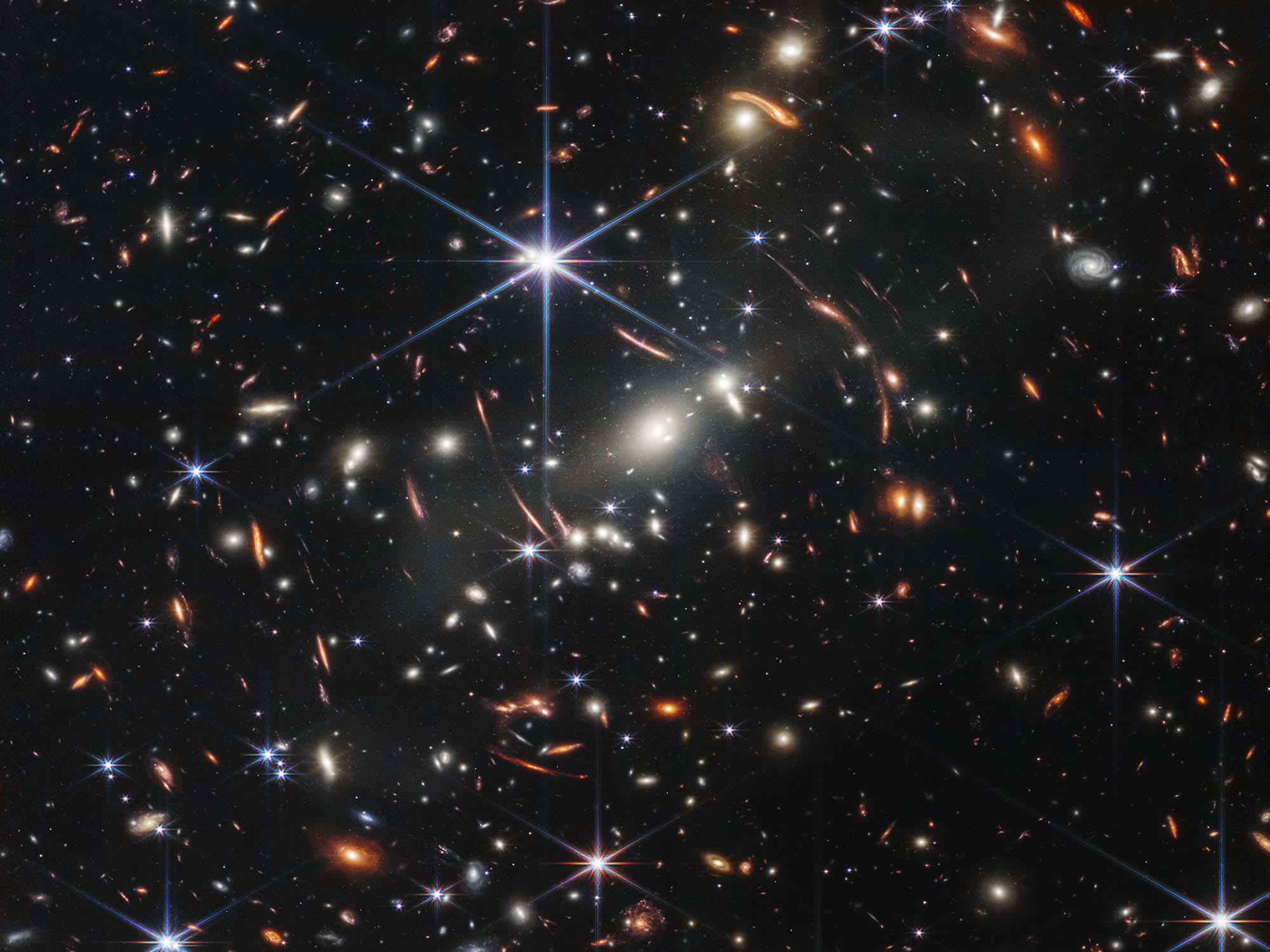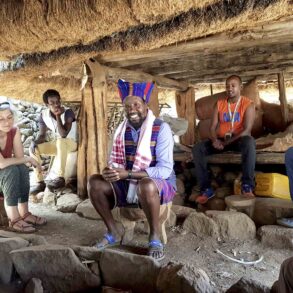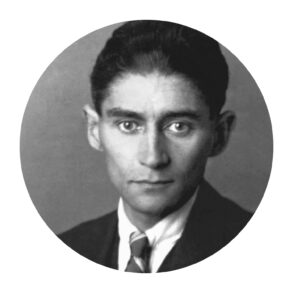Images from the James Webb telescope show mature galaxies in the earliest moments of the universe. Is everything already there at the beginning?
Development has two surprises. The first you experience when you learn a foreign language, for example. Word for word, then phrase for phrase, one practices and then – often over night – the tongue loosens, the language flows. Development jumps. It is not linear. The second surprise is more mysterious, even contradictory. It is not uncommon to come across it in one’s own personal development. Contemplation and meditative practice leads one to becoming more humble, to the growth of devotion in the soul. At the same time, humility is a prerequisite for getting into a meditative state at all. As if time were reversed, the result is at the same time a prerequisite, the goal is a condition. Once one has become attentive to this, one encounters this riddle again and again. In the illustrated book ‹The Open Secret› [Das offene Geheimnis], Walter Schels photographically juxtaposes newborns and very old people and shows how much of the expression is already there in the smallest.
Beethoven and Newborns Show It
On a large scale, the pyramids are examples of this interweaving of time. From the Mastaba, the Egyptian trapezoidal stone burial mound, the pharaoh Djoser and his physician and builder Imhotep created the pyramid Saqquara – six Mastaba trapezoids joined one above the other. 50 years later, under the pharaoh Snofru, the classical pyramid was created from this archetypal form in the Red and Bent Pyramids not far from Cairo, and his son Cheops built the largest and most perfect pyramid in Giza. Of course, there were also economic reasons that in the further course of the ancient empire of Egypt the pyramids did not reach this perfection and they were built with bricks instead of stone. And yet it can be seen that the grandest pyramids were not at the end of a development, but rather almost at its beginning. Not a continuous growth, where each step is more perfect than the previous one, but comparable to an intuition, a leap, everything seems to be said at the beginning, as in Beethoven’s 3rd and 5th symphonies. In the first bars, the motif is heard and then one wanders through it musically – the archetype is intact at the beginning.

Young Adult Galaxies
Astrophysicists are asking themselves similar questions now that the James Webb telescope has been sending its first images to Earth since last summer. The space telescope has been orbiting 1.5 million kilometers above Earth’s night side. Protected by a sunshade, the telescope is able to capture light at the red end of the spectrum. To do this, the apparatus is cooled to a residual heat of 3 degrees above absolute zero to receive traces of thermal radiation in the cosmos. Just as a departing vehicle sounds deeper than an approaching one because the waves compress and then stretch, so a departing star glows more reddish than one rushing toward Earth. Christian Doppler, who described the phenomenon, also gave it its name. According to the big bang theory, in the beginning, 15 billion years ago, matter was moving apart the fastest and then slowed down due to mutual attraction. From this thought it follows that those stars and galaxies appear the reddest, thus fleeing the fastest, are the oldest, closest to the moment of creation, calculated at 15 billion years before.
The James Webb telescope now found galaxies with such a redshift that it can be assumed that they must have existed 350 million years after the calculated first creation moment of the universe. Ivo Labbé and his colleagues from Swinburne University in Melbourne write in the journal ‹Nature› that the galactic objects are so large and mature that it is hardly conceivable according to the previous theory. The pictures from the primeval times of the universe prove that after only three percent of its age, large galaxies the size of the Milky Way already existed.
Perfection at the Beginning
The space and time conceptions of today’s cosmology are based on the principle that everywhere and at every time the same laws of nature are valid. Salt crystallizes here and today the same way it will in 100 million light years and the same way it did 10 billion years ago. If in the beginning the laws of nature were also in development, all time and space determinations change. What doesn’t change is that the observations of the James Webb telescope are close to the origin of time and space, and at that moment, some worlds were already perfect and then others, ours, followed these worlds. If it were so, what would that mean? In the beginning there is already something of the present contained. The so-called strong anthropic principle of cosmology says nothing else when it comes to us humans: the probability that human life could arise on a planet is so small that it must have already existed in the beginning as a goal.
Title image Near-infrared image of the galaxy cluster SMACS 0723; Obtained with James Webb Telescope in June 2022. Photo: NASA/ESA/CSA/STScI.














Not sure what Wolfgang Held was driving at , but at least he gave some credence to the isotropy and homogeneity points and the anthropic principle.Good on you Wolfgang!
Ssriously general relativity was in its infancy whenRudolf Steiner was incarnated and anthroposophy needs to engage with it i consider.I also note DeSitter and his geometricc concepts, as well as the Jesuit LeMaitre , who started or was early involved in the big bang interpretation of general relativity.He rigidly divorced ‘science’ from faith but how does a Christ centred cosmology expand into these modern conceptions and cosmic observations? I should like to hear more on that question and of anthroposophy coming to grips with these difficult questions.
Hi, I think that the mentioned ‘divorce’ of science from faith is at a core of a problem here. Both concepts, as are generally perceived, presented and practiced today, are inadequate to really come to grips with reality and human experience. New, holistic concepts shall take place for understanding or creating any meaningful cosmology. One can never understand a whole while one abstracts arbitrarily from its innate parts. Approaching spiritual science with mind free from this outdated separation can, bring wonderful insights.
You may want to read Tielhard DeChardin books of which there are many but particularly “Hymns of the Universe” and “Activation of Energy”